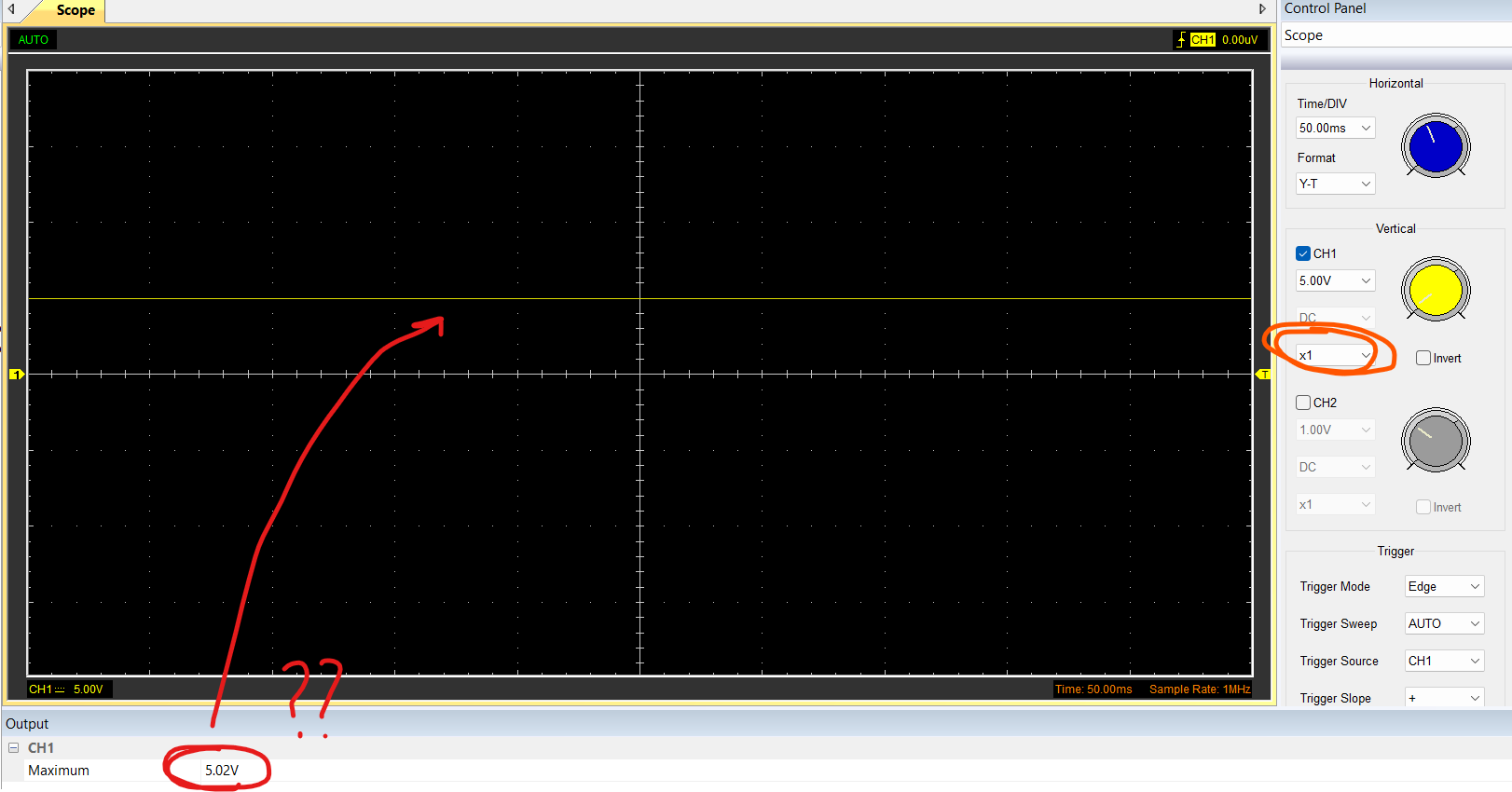This is my first time using an oscilloscope so please be gentle with me. I have Hantek 6022BE. The probe is calibrated right because I connected it to the pin on the oscilloscope with the square wave to calibrate it and I display the square wave correctly.
I connected the probe to the 5V supply on the stm32 and I see this:
 1) SOLVED If I set 5 V/div ... shouldn't I see the yellow line (of CH1) exactly horizontally coincident with the first division? From what I can see, it seems to be measuring 15V. Maybe I need to play with the trigger?
I tried 2V/div as well, and the yellow line goes out of the display.
1) SOLVED If I set 5 V/div ... shouldn't I see the yellow line (of CH1) exactly horizontally coincident with the first division? From what I can see, it seems to be measuring 15V. Maybe I need to play with the trigger?
I tried 2V/div as well, and the yellow line goes out of the display.
I tried moving the trigger exactly to the height of the yellow line:

2) SOLVED I can't figure out what is the maximum voltage value that the oscilloscope can measure. In case you need, the probes are PB80B:

3) I tried connecting the probe to 12V DC, and depending on the probe (1X or 10X) I get these two graphs:

 Why do I see maximum 5V with the 1X probe?
Why do I see maximum 5V with the 1X probe?



